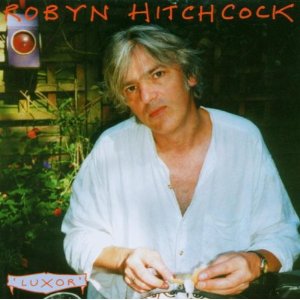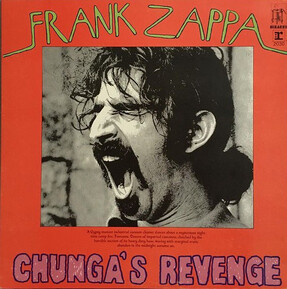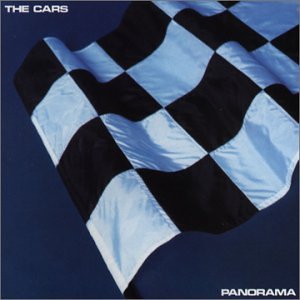With only his name and gaping maw on the cover, one might assume that
Chunga’s Revenge would be another “solo” album and therefore not at all like the same year’s Mothers output. That assumption would not be entirely correct.
By the time he recorded this album, he’d put together a new Mothers, retaining only Ian Underwood from the old band, but adding more seasoned players, including British drummer Aynsley Dunbar (who would one day anchor Journey) and jazzman George Duke on keys. This gave him a more solid base upon which he could do his thing, as demonstrated on “Transylvania Boogie”, “Twenty Small Cigars” (a Hot Rats outtake, previewed on Jean-Luc Ponty’s album of Zappa interpretations earlier that year), and the title track. Arguably, the highlight of the album is “Sharleena”, one of his best songs from both a lyrical and musical standpoint.
However—and this is a big, big however—he also recruited two singers from the Turtles to sing and add harmonies. These would be Mark Volman and Howard Kaylan, a.k.a. Flo & Eddie. While only in the Zappa employ for eighteen months, their sycophantic stain would be felt on every album and concert tour for the balance of his career. From here on out, instrumental virtuosity would be pitted against or alongside scatological lyrical content.
Luckily for Chunga’s Revenge, they’re more of a decoration than the focal point, really only taking over on side two. They’re first heard helping out with “Road Ladies”, an actually enjoyable blues until one of them gets to mewl a verse on their own. “Rudy Wants To Buy Yez A Drink” is another novelty in-joke that wouldn’t have been out of place on Absolutely Free. “Tell Me You Love Me” is a loud parody of contemporary rock, while “Would You Go All The Way?” makes odd references to both the U.S.O. and the U.S.A.
Even when they’re not singing, Frank’s fascination with groupies and “bands on the road” is still pretty obvious. (Some say this is a key example of “conceptual continuity”, or maybe it’s proof of a one-track mind.) The album was, as he was wont to do, presented as a “preview” of music from an in-progress film—in this case, 200 Motels. We might assume that “The Nancy And Mary Music”, a live improvisation, was supposed to accompany something featuring groupie characters. Even “The Clap”, otherwise a multi-tracked percussion piece (the drums being his first musical love) edited next to the title track, refers to a social disease common to touring bands.
Taken on its own, Chunga’s Revenge is a perfectly harmless album. It is, however, the fine line after which one’s tolerance for shock value will be tested. Proceed accordingly. 1970 was a transitional year for Zappa, and obviously neither he nor anyone could envision the events that would follow.
A half-century later, once the industry had fallen in love with anniversary repackages and the Zappa Family Trust started issuing comprehensive expansions of various albums, more of the music from the year would be revealed. The Super Deluxe Edition of the
200 Motels soundtrack included further music from the
Chunga sessions that would end up in the film, but more interesting musically was the hour’s worth of music from Trident Studios in London that made up the first disc of
The Mothers 1970. Highlights include Frank’s original vocal on “Wonderful Wino”, a few instrumentals with just Frank and Aynsley Dunbar, and an early run through “Envelopes”. Three further discs in the set are dedicated to live performances featuring Flo & Eddie, which gradually devolve from renditions of Mothers catalog tunes on a Dutch TV show to the “routines” the group would undertake mere months later, interspersed with various field recordings of conversations Frank captured to fuel his inspiration. Much of this fatuous material is presented in sub-bootleg sound quality, adding insult to injury, but does lift anytime the vocalists stick to their tambourines while Frank rips off a solo, as on the otherwise unknown “Portuguese Fenders” and an early draft of
“Easy Meat”, or for any of the renditions of “King Kong”, each of which includes a detour through
“Igor’s Boogie”. The band, for all the hijinks, was tight.
Frank Zappa Chunga’s Revenge (1970)—3
The Mothers The Mothers 1970 (2020)—2½

:format(jpeg):mode_rgb():quality(90)/discogs-images/R-2572291-1291073319.jpeg.jpg)







:format(jpeg):mode_rgb():quality(90)/discogs-images/R-2980999-1312752951.jpeg.jpg)
